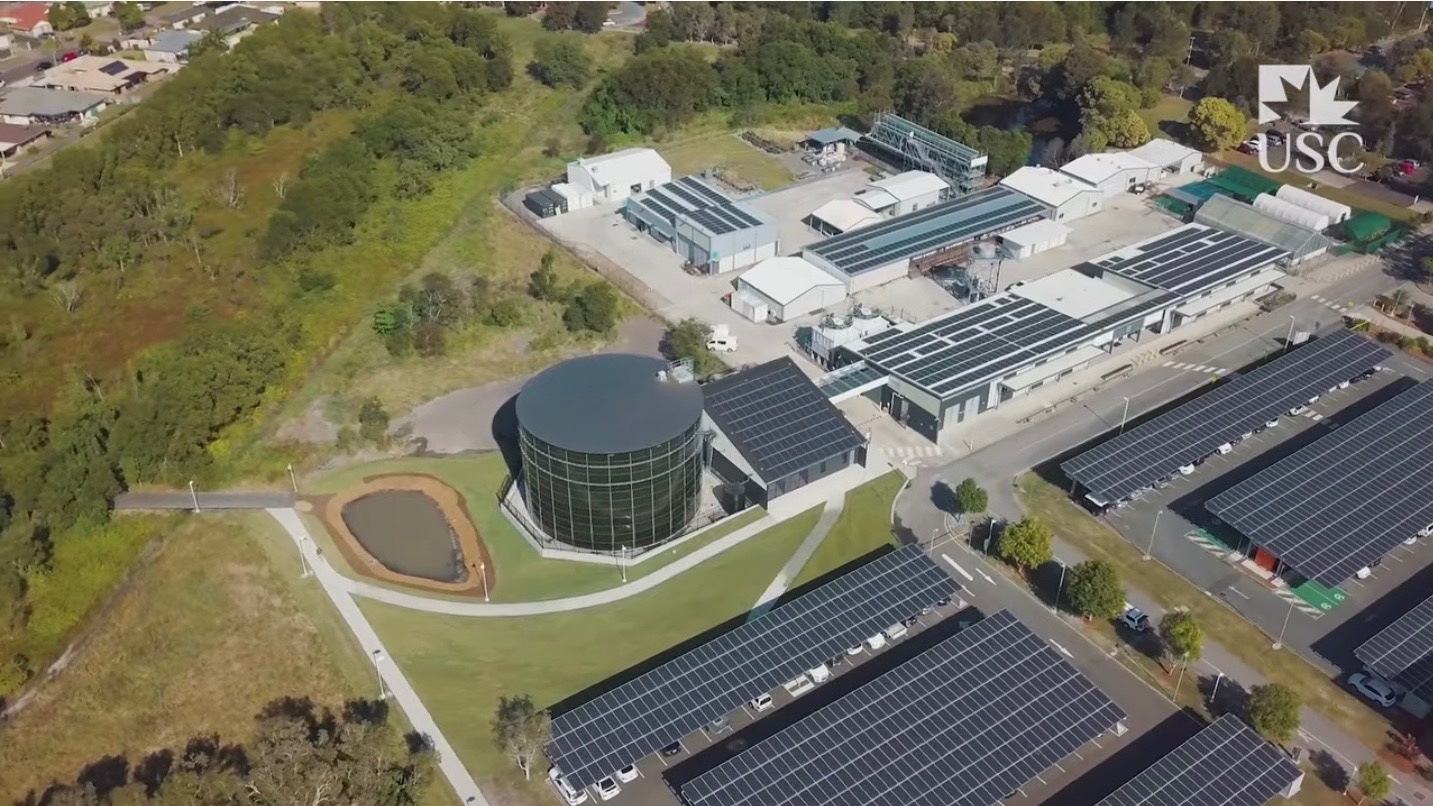
Giant Water Battery Cuts University’s Energy Costs by $100 Million Over Next 25 Years

We've installed 6,000 solar panels across the roofs and carparks of the University. Youtube screenshot
A giant water battery that stands three-stories high will help The University of the Sunshine Coast in Australia reach its goal to be carbon neutral by 2025.
The Queensland university’s ambitious target date got a boon from the success of the experimental battery, which was turned on in September and now generates enough power to power the campus’ air conditioning system, reducing dependence on the grid by 40 percent, as New Atlas reported.
The giant battery harnesses power from over 6,000 solar panels that line the rooftops of the campus’s buildings. It then uses that power to cool water, which is then used in the school’s air conditioning system. The battery is expected to save 0 million electricity costs over the next 25 years and to prevent 100,000 tons of CO2 from being emitted into the atmosphere, according to the Sydney Morning Herald.
The University of the Sunshine Coast partnered with the resource management company Veolia to create the enormous battery. Veolia, a French transnational company that specializes in water and energy management funded and engineered the battery. Veolia and the university wanted to take advantage of the regions abundant sunshine and to cut down on the air conditioning systems’ outsized reliance on the grid, as New Atlas reported.
The project was awarded the Out of the Box category of the Global District Energy Climate Awards last week, as the Sydney Morning Herald reported.
“The University of the Sunshine Coast has a plan to be completely carbon neutral by 2025, which is a challenge to any budget because it requires significant changes to the way energy is captured and consumed,” said Chief Operating Officer Scott Snyder, in a university press release. “So, we really did have to think out of the box, and by forming a partnership with Veolia, we were able to negotiate a 10-year plan that suited us both and delivered major energy savings to the University.
According to Veolia, the system, which is essentially a huge thermal energy storage tank, is reducing the carbon footprint of the university by 42 percent, as New Atlas reported.
“Universities have a very large energy footprint and we wanted to tackle that and reduce that expense,” said Dennis Frost, the university’s infrastructure and energy manager, who received the award in Iceland. He added that the project provides great fodder for teaching students about using solar power, since it is a real world example of a renewable energy source cutting down on emissions and saving money. “I think it is exciting because we have the opportunity to teach the younger generation that the environmental challenges that are faced by the planet can be solved,” he said, as the Sydney Morning Herald reported.
Queensland, in the northeast corner of Australia and home to the Great Barrier Reef, has ramped up its production of solar power. Last month, the Queensland Energy Minister Anthony Lynham said that solar panels in Queensland generated twice as much energy as the state’s biggest power station.
Queensland has 30 solar farms. Their power coupled with solar panels on homes and businesses produced 4,000 megawatts of power. By contrast, the region’s largest power plant produced 1,680 megawatts of power, according to the Sydney Morning Herald.
- Australia to Build the World's Largest Solar Farm to Power Singapore
- Tesla's Giant Australian Battery Saved Consumers $35 Million in ...
- World's Largest Solar Farm to Supply 20% of Singapore's Electricity - EcoWatch

 233k
233k  41k
41k  Subscribe
Subscribe 